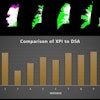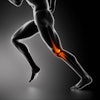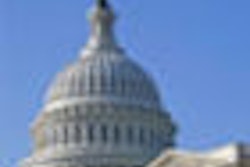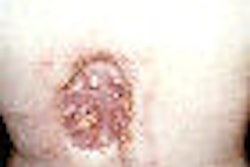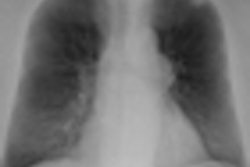ATLANTA - Hydration with sodium bicarbonate is no better than using standard saline for preventing contrast-induced neuropathy (CIN) in at-risk diabetes patients, according to research presented this week at the American College of Cardiology (ACC) meeting.
In one of the first trials to compare the two approaches, Dr. Young-Hak Kim, Ph.D., of Asan Medical Center in Seoul, South Korea, discussed the findings of the Prevention of Recurrent Venous Thromboembolism (PREVENT) trial, which studied 382 patients with diabetes and mild to moderately impaired renal function.
Of the cohort, 5.3% of the patients who received sodium chloride solution infusions developed contrast-induced nephropathy, compared with 9.0% who were given sodium bicarbonate solutions. The difference was not statistically significant (p = 0.17).
Contrast-induced nephropathy is the most common form of secondary acute kidney injury during hospitalization, affecting up to 50% of patients with chronic renal insufficiency, especially if diabetes is present, Kim said. For this study, CIN was defined as a rise in serum creatinine greater than 25% or an absolute increase of serum creatinine of 0.5 mg/dL or greater within 48 hours after contrast exposure.
Previous research has shown that patient hydration before and after an angiography procedure is effective in preventing CIN, but uncertainty has remained as to whether hydration with sodium bicarbonate or sodium chloride is more effective, he said. Some previous studies have suggested that sodium bicarbonate might be more protective, perhaps due to counteracting acidity.
The randomized, controlled, single-blind study conducted between February 2008 and August 2009 at nine academic centers in South Korea involved diabetic patients with stable renal disease, defined as serum creatinine of 1.1 mg/dL or greater, estimated glomerular filtration less than 60 mL/min/1.73 m², and diabetes mellitus.
All the patients underwent contrast-guided coronary or endovascular intervention or angiography. The contrast agent used in all patients was nonionic, dimeric, iso-osmolar medium iodixanol (320 mg of iodine/mL of Visipaque, GE Healthcare, Chalfont St. Giles, U.K.).
Patients were randomized to open-label hydration with saline (0.9% isotonic solution at 1 mL/kg infused for 12 hours before and after contrast injection) or sodium bicarbonate (154 mEq/L infused at 3 mL/kg for one hour prior to contrast, then 1 mL/kg per hour during and over the six hours after the procedure).
The total volume of contrast and the percentage of patients who were administered a high contrast load was similar between the two arms groups. All the patients were also given 1,200 mg of N-acetylcysteine, another preventive treatment for CIN, twice a day. Serum creatinine levels and the estimated glomerular filtration rate did not change significantly in either group.
A total of 2.1% of patients who received bicarbonate had to undergo dialysis after the procedure versus 1.1% who received saline, but the difference was not significant (p = 0.69).
Patients who had a high contrast load (greater than 140 mL) were more likely to develop CIN within 48 hours of the coronary procedure, regardless of which hydration agent they received.
At 30-day follow-up, the rate of major adverse events, including myocardial infarction, stroke, dialysis, and death, was similar between the two groups. However, by five months, there was a trend favoring saline, although it was not statistically significant: 1.1% versus 4.1% (p = 0.11).
One limitation of the study is that the lower overall volume of bicarbonate hydration might have influenced the results, Kim said.
Additionally, "there is still uncertainty about bicarbonate treatment on top of normal saline infusion," he told the audience.
Study discussant Dr. Donald Cutlip of Beth Israel Deaconess Medical Center in Boston questioned whether a higher dose and volume of bicarbonate may have worked better. Further study is needed, Kim said.
The study was supported by grants from the Cardiovascular Research Foundation of Seoul, South Korea, and the Korean Ministry of Health and Welfare.
By Charlene Laino
AuntMinnie.com contributing writer
March 16, 2010
Related Reading
Coronary angiography safe for patients with chronic kidney disease, October 16, 2009
Bicarbonate use cuts risk of contrast nephropathy during PCI, October 13, 2009
High-dose N-acetylcysteine reduces contrast nephropathy, September 14, 2009
Study: Iso-osmolar contrast not safer for kidneys, July 30, 2009
Contrast-induced nephropathy: Much ado about nothing? July 28, 2009
Copyright © 2010 AuntMinnie.com
